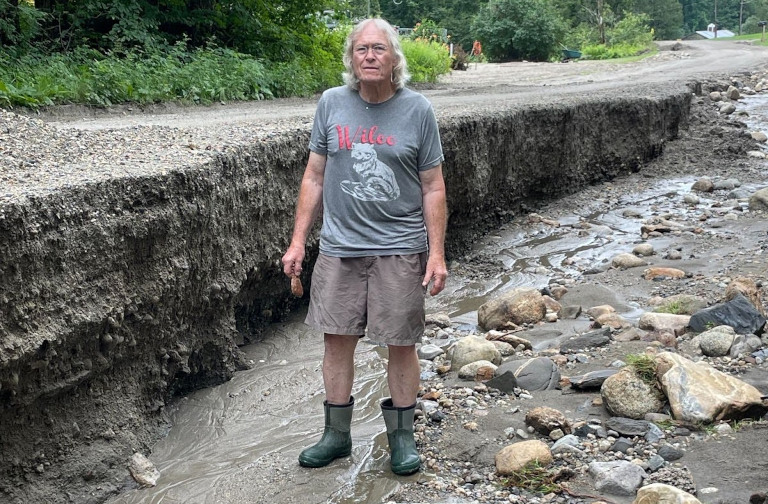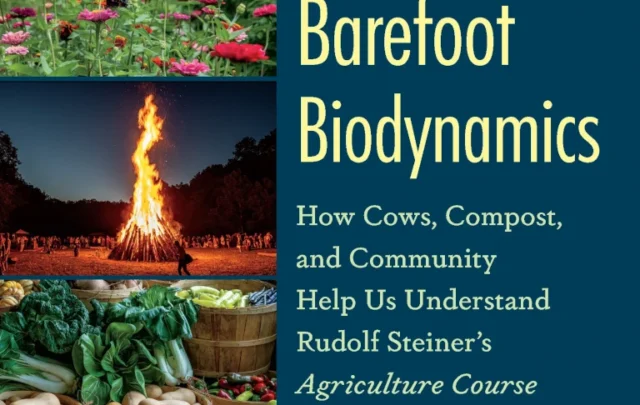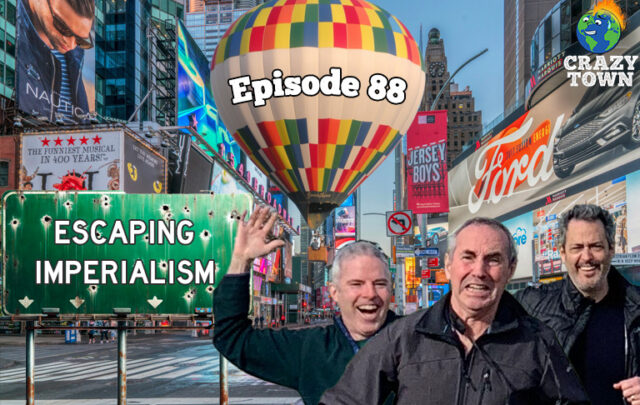In August 2023, Vermont’s Governor Phil Scott stood in front of reporters at a press conference and held up a license plate.“We are Vermont Strong,” the plate read in block white lettering, a green outline of the state filling the background. “Tough too!” was scrawled in a handwritten font next to the main text, a riff that alludes to the state Department of Motor Vehicles’s partnership with Vermont sock maker Darn Tough.
The license plates, which are a revival of a design created after the state’s devastation from Hurricane Irene in 2011, were unveiled as a response to the historic floods in summer 2023. From July 10-11, 3 to 9 inches of rain fell across the state in just 48 hours, leading to widespread damage.
“Time and time again, Vermonters have shown how willing they are to step up, join together, help their neighbors, and unite for their communities,” Gov. Scott said at the press conference. “This summer’s flooding has been no exception.”
The rhetoric used on the “Vermont Strong” license plates and Scott’s remarks about neighborly responses to the flooding align with the general portrayal of Vermonters in national media coverage of the event. In articles focused on hard-hit towns like Montpelier, the state’s capital, reporters have honed in on the community response to the floodwater’s damage, sharing stories and photos of neighbors coming together to lend one another a hand. This media coverage paints a picture of radical altruism during disaster, which Rebecca Solnit may classify as an example of a “paradise built in hell.” The narrative of Vermont’s disaster response harkens to a concept of resiliency wherein Vermonters, following their history as strong and tough people, are able to bounce back from hardship by helping each other out.

Aerial footage of Montpelier shows the state’s capital city underwater following the July 10-11 floods. Photo Credit: U.S. Department of Defense
Instilled from my upbringing in the tiny town of Burke, I hold a sense of pride in the characteristics of strength and hardiness that are attached to the state’s identity. The July floods devastated Vermonters’ livelihoods and brought with them the truth that there are limitations that come from this understanding of resiliency, especially when it’s applied in a homogenous context across all of the state’s residents. What does it really mean to be “Vermont Strong. And tough, too”? How might this identity actually harm those whom it claims to represent?
From the late 19th century, Vermonters have been depicted in national media outlets as a rugged and self-reliant group of people. This vision of the New England state as “white, homogenous, and untroubled by change” instills a notion of resilience in its population by those looking from the outside. It also has led to a self-conceptualization of this identity by Vermonters themselves.
Cheryl Morse and colleagues argue that one’s regional identity is often tied to their surrounding landscape, perpetuated by both its viewing and the activities one partakes in it. In the context of the Green Mountain State, Morse argues that the idea of what Vermont should look like is centered upon a “past-productivist pastoral view.” This imagery is alive in the photos one finds when Googling the state: rolling hills of pasture accompanied by church steeples, farmhouses, and barns. Many Vermonters may not work the landscape as their main way of producing income like their predecessors once did, but the image of quaint rural farm life toted in state tourism materials lives on in the imaginations of many of its citizens.
Vermonters, on average, have a high level of engagement with their landscapes. Many Vermonters draw a rich connection from the rocky soils and harsh climate of the state to their personal identities of toughness. When Vermonter and songwriter Noah Kahan sings “I was raised on little light,” he does so with a sense of pride. Many Vermonters I know do the same.
This portrayal of Vermonters as “timeless people” who resist cultural and economic changes, however, is far from the whole truth. The ideal of resiliency that homogenizes differing identities and romanticizes hardship can be used for the justification of harming Vermonters on the fringe of the archetypical state identity; look no further than the state’s horrific history within the eugenics movement to see this. The same type of harm that is tied to a Vermont identity is also apparent in the 2023 summer floods.
Scholars Anne Leitch and Erin Bohensky argue that news media coverage of a natural disaster helps shape the “collective social script” that influences community-wide conceptualization and processing of the event. The collective social script of July’s flooding in Vermont was one that highlighted the resiliency and hard-working nature of those in the state’s capital – the perceived center of floodwater damage – in their ability for collective community aid.
“Vermont being Vermont, most of the people here are busily helping each other out through this mess,” wrote Eliza Daley for Resilience. “There is the usual New England reticence in the face of disaster. Just pull up your britches and get on with it sort of thing.” In my hometown region of the Northeast Kingdom, though, this narrative was messier and more complicated than the dominant Montpelier narrative.
The physical realities of the rurality that are often celebrated and held as an ideal within the homogenous Vermont identity, it seems, stand in opposition to this narrative of Vermonters harmoniously coming together in the face of disaster. Parts of the Kingdom, a region comprising three counties tucked away in an often overlooked corner of the state, received an equal amount of rain as Montpelier during the July floods. However, the region received little to no media attention about the devastation it experienced. The locals’ experiences of the flooding itself were different too.
The Northeast Kingdom (in green) comprises the three northeasternmost counties of Vermont. Map credit: https://www.vermont-map.org/road-map.htm with green overlay by author
Toughness is a detriment when it becomes a part of one’s identity that stops them from receiving needed resources and assistance. Or, as Leitch and Bohensky put it, “a label of resilience may prevent individuals from asking or accessing the help they need.” The flood relief response in Orleans County, which received the bulk of flood damage in the Kingdom, was wrought with issues of inaccessibility and invisibility. Washed-out roads made it hard to access many locations – it’s hard to help your neighbor when you can’t physically get to them – and aerial footage taken by FEMA hid the devastation of flooded basements and standing water within many of the area’s homes. A mentality of independence was also a detriment to some community flood relief efforts, barring individuals from accepting help from their neighbors.

My grandfather stands in a section of a dirt road washed out by the floods in Burke, VT Photo credit: Carol Krochak
A family friend of mine, Rev. Alyssa May, was at the center of critical community relief efforts taking place in Orleans County this summer. In her collaboration with Northeast Kingdom Organizing (NEKO), a mutual aid coalition in the Kingdom that largely led the area’s on-the-ground efforts for flood relief, May told me that she saw this attitude of tough individualism in many of the folks with whom she interacted. This shone through in instances of people who had lost their homes to flood damage but refused to think about rebuilding elsewhere. “There’s the loss of pride if you ask for help, but there’s also this sense of pride that you have stayed,” May explained. “That you have maintained, that you are still here, that you are a survivor.”
But there is a big difference between being a survivor and thriving in one’s environment. The “storytelling of the Kingdom being so resilient,” May expressed, can lead to an external narrative “that these hardscrabble people are going to figure it out.”
The Kingdom has long been a place of myth-making that enforces a binary framework of its people as either exceptionally self-resourceful or living in a “rural slum.” This identity of resilient rural people who make do with what they have contributes to reinforced cycles of hardship in places like the Kingdom, which has the highest poverty rate of any region in the state. It also leads to an nternalization of this mentality and a sense of pride in being a Vermonter who will continue to face hard times but will persevere nevertheless.
The rugged individualism placed by many residents of the Kingdom onto their own self-determination, however, does not bar them from tapping into the Vermonter characteristic of helping their community out. May told me that she and NEKO had the most success in distributing meals and supplies to those impacted by the flood when they reframed their aid not as charity, but as a positive contribution to their neighbors. When NEKO flipped the script from “Please take this meal because you need it” to “We need you to take this meal so the restaurant that made it can stay in business,” they saw an increase in food distribution. The work that NEKO had done ahead of last summer in developing a structured network of support within the community has contributed to volunteer labor that stepped up after the floods.
On the state-wide level, similar mutual aid and fundraising efforts that stemmed from the “Vermont Strong” identity impacted the Kingdom in a positive way. For instance, the Vermont Community Foundation – one of the recipients of proceeds from Gov. Scott’s license plates – has contributed funding to NEKO’s efforts, providing essential money for maintaining their operating space. This funding that supports the work of local mutual aid efforts like NEKO helps empower a type of neighbor-to-neighbor solidarity that focuses not on the charity of individuals but the cooperative sustainability of their community.

Family and friends remove flood debris from my grandparents’ yard in Burke, Vermont. Photo credit: Carol Krochak
The type of toughness that means coming together to help each other out is the Vermont Strong we should strive for. But it’s often conflated with independence, which is the last thing we need. The image of the unchanged Vermonter standing firm in their livelihood defined by hardship is incongruent with the conception of resilience that imagines “bouncing forward, not back” in a changing climate marked by more frequent and devastating weather events like the summer 2023 floods.
Scholar Bridie McGreavy contends that “resiliency’s definitions and ordering strategies influence how we become resilient.” Vermonters need to conceive of their resilience as something that enables them to imagine new futures, not stand steady in ways of the past marked by homogenous identities that sometimes do more harm than help.
“When I think about Vermont tough,” May tells me, “there’s a kind of tough that’s like ‘I don’t need it. Somebody else needs it more.’ But there’s also that recognition that you can have a direct impact on your neighbor’s well-being. And that kind of toughness, that willingness to be part of mutual aid or to show up and muck out somebody’s basement without any expectation of being paid or thanked, that part of the toughness I’m alright with.”





